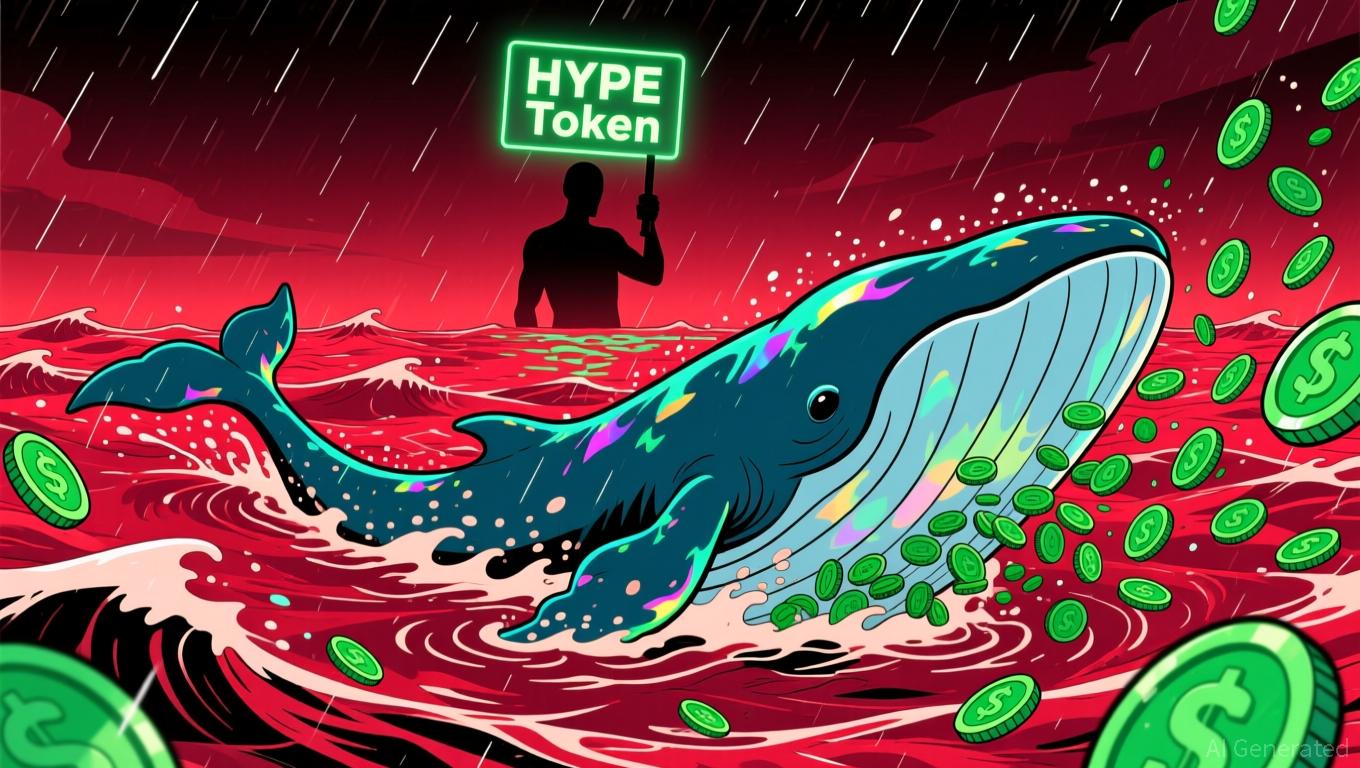The Emergence of DASH Aster DEX: Ushering in a New Age for Decentralized Exchanges?
- DASH Aster DEX introduces a hybrid AMM-CEX model with AI-driven liquidity and ZKP-based blockchain to address DeFi scalability and trust issues. - The platform achieved $27.7B daily trading volume and $1.399B TVL in Q3 2025, attracting both retail and institutional investors through cross-chain liquidity aggregation. - Aster Chain's 10,000 TPS capacity and privacy-preserving ZKP technology position it as a high-throughput competitor to Ethereum and Solana while balancing transparency and confidentiality.
Uniting AMM and CEX Strengths
The hybrid approach of Aster DEX is its most groundbreaking aspect. While conventional AMMs often deal with high slippage and inefficient capital use, CEXs are challenged by trust and regulatory issues. Aster DEX addresses these problems by merging CEX-style order books with AMM liquidity pools, resulting in quicker trades and narrower spreads.
AI-Powered Liquidity: Setting a New Standard
The platform’s AI-based liquidity routing is another key differentiator. By intelligently distributing capital among pools, it minimizes slippage and boosts capital efficiency—addressing a major challenge for DeFi platforms.
Scaling and Securing with Aster Chain
The proprietary Aster Chain from Aster DEX, which is a ZKP-enabled Layer 1 blockchain, marks a significant technological advancement. It can handle 10,000 transactions per second (TPS) and safeguard $50 billion in Layer 2 assets, directly tackling the scalability and privacy issues that have limited DeFi’s expansion
Tokenomics and Ecosystem Expansion
The
Building Trust and Strategic Alliances
Aster DEX’s reputation has been strengthened through collaborations with industry leaders such as Binance and YZi Labs, bringing both capital and credibility
Potential Risks and Obstacles
Despite its rapid ascent, Aster DEX must contend with several challenges. Regulatory ambiguity remains a significant concern for DeFi projects, especially those employing ZKP technology. While Aster Chain’s privacy tools are an asset, they may also attract regulatory scrutiny regarding anti-money laundering (AML) standards. Additionally, established DEXs like
Investment Perspective
For those considering investment, Aster DEX stands at the crossroads of cutting-edge technology and strong market demand. Its hybrid structure tackles DeFi’s key issues of liquidity and scalability, while AI-powered features improve the user journey. The platform’s Q3 2025 achievements—$27.7 billion in daily trading and a 1,650% token increase—showcase its rapid growth potential. Nevertheless, ongoing success will depend on overcoming regulatory hurdles and sustaining innovation.
Looking at the bigger picture, Aster DEX’s progress could mark the beginning of a new phase for DeFi, where robust institutional infrastructure and decentralized governance go hand in hand. If the platform continues to deliver on its promises, it may
Disclaimer: The content of this article solely reflects the author's opinion and does not represent the platform in any capacity. This article is not intended to serve as a reference for making investment decisions.
You may also like
Solana News Update: Dawn: Solana's Fast Track to International Financial Markets
- Wormhole Labs launched Sunrise, a Solana platform for instant token listings via NTT framework, bypassing wrapped tokens. - MON became first token listed on Nov 23, enabling immediate trading on Jupiter and Orb DEXs with native liquidity. - Platform addresses Solana DeFi's fragmented liquidity by standardizing cross-chain entry for new assets from day one. - Sunrise aims to expand beyond crypto to tokenized commodities and real-world assets, competing with Ethereum's DeFi dominance.

Hyperliquid News Today: Crypto Faces Widespread Challenges as Short Sellers Profit and Long Positions Suffer Amid Market Volatility
- HYPE whale 0x082 faces $10M unrealized loss after 126% price drop, raising pre-announcement trading suspicions. - Abraxas Capital liquidates $620K in HYPE shorts while BitMine reports $3.7B ETH unrealized loss amid compressed crypto premiums. - Hyperliquid's 0x5D2F nets $51M BTC short profits as 53.2% of platform positions favor bearish bets. - Robinhood's $1.27B Q3 revenue surge contrasts with $1.5B insider share sales and tokenized stock expansion into Europe. - Market fragility persists with declining

ICP Jumps 30% in a Week: What’s Fueling the Buzz and What Could Happen Next?
- ICP token surged 30% in 7 days amid whale accumulation and rising network adoption metrics. - Daily active addresses rose 35% while DEX volumes hit $843.5M, signaling growing decentralized computing utility. - Futures open interest reached $188M as retail optimism clashes with technical concerns below EMA-9 at $5.40. - Key resistance at $6.47 could trigger further gains if ICP sustains above $5.40, but leveraged positions pose correction risks.

Grayscale & Franklin Templeton XRP ETFs Go Live: What’s Next for XRPs Price?